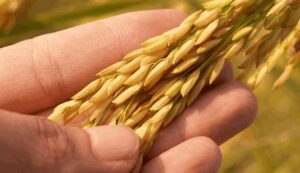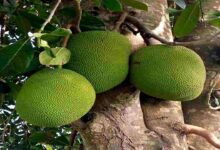Paddy Varieties: Cultivate these 10 varieties of paddy in the month of June, there will be bumper yield
Paddy Varieties: It is necessary to adapt agricultural practices in tandem with the changing weather. The modern farmer should embrace climate-smart cultivars and new technologies to increase farming’s profitability and safety. Farmers’ concerns are growing for a variety of reasons, including weather, water scarcity, and changes in soil quality. The primary victim of weather fluctuations is currently paddy agriculture, which provides the main nutrition for millions of people throughout Asia. In order to assist farmers, scientists have created several rice types that can tolerate challenging circumstances and provide high yields even with less water.

1. Pusa DST Rice 1
IARI, New Delhi, is the company that produced this variety. It performs better on saline and drought-prone soil. Even under challenging circumstances, this cultivar may provide a 20% higher yield. It is ecologically beneficial in addition to having a strong yield.
2. Pusa Basmati 1509
It takes just 15 days to prepare this kind of Basmati. When compared to conventional types, it may save up to 33% of water. In order to plant wheat on time, the fields are swiftly cleared, which also facilitates the following crop’s preparation.
3. Pusa RH 60
This is a long-grain, hybrid aromatic cultivar. Farmers might get a higher price for it because of the market’s great demand. It is widely grown, particularly in Uttar Pradesh and Bihar.
4. CRD KN2 and Pusa Narendra KN1
These two types are enhanced versions of the classic Kala Namak rice. These types are resistant to pests and diseases, which lowers the cost of production and requires the farmer to use fewer pesticides.
5. Pusa-2090
This kind takes 120 to 125 days to prepare. 34 to 35 quintals may be produced per acre. This kind lessens the need to burn stubble, which is good for the environment as well.
6. DRR Paddy 100 – Kamala
The Indian Rice Research Institute in Hyderabad is the one that created it. Compared to conventional types, this one produces 19% more and emits less methane gas. It is a great choice for farmers that care about the environment.
7. Swarna-Sub1
This kind is perfect for regions impacted by flooding, particularly in eastern India. Its plant may continue to produce after 14 days of being immersed in water. Its thick, tiny grains make it suitable for household usage.
8. CR Paddy 108
Rain-fed farms may use this variety, which is ready in 112 days. States with unpredictable rainfall, like Odisha and Bihar, particularly benefit from it.
9. Samurai-1444
This is a higher-quality type that takes 140–145 days to mature. Farmers may earn a decent price for it because of its strong market and export demand. You may cultivate this cultivar for a long period.
10. Arise Hybrid
This type is particularly well-suited for South Asian farmers. Due to its great output, this species is well-suited for commercial farming on a big scale.
Why is it vital to have these new varieties?
Adopting new rice varieties has become crucial in the current era of several challenges impacting agriculture, such as soil quality, water scarcity, and climate change. These types may produce a decent crop with less water, and they are more effective at warding off pests and diseases, which lowers the need for pesticides. In addition, these cultivars can tolerate weather fluctuations, which lowers the likelihood of crop failure. These not only lower agricultural expenses but also provide farmers access to higher market prices and export opportunities. The fact that these cultivars are environmentally friendly is crucial since it makes farming sustainable and secure for the future.

